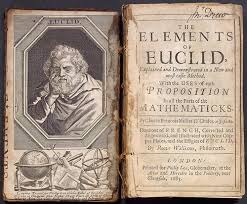The Architect of Geometry, Revealing the Enduring Layers of Spatial Order
Circa 300 BCE, Alexandria. The Library of Alexandria, a hub of knowledge in the ancient world. Scrolls filled with geometric diagrams and meticulously organized theorems line the shelves. Scholars gather, their minds focused on the pursuit of mathematical understanding.

Euclid, a figure of quiet authority, presents his work. “Observe,” he states, his voice calm and measured, “the elegant structure of these principles, the timeless order that governs the very fabric of space.” He points to a series of carefully constructed geometric figures, illustrating the logical progression of his axioms and postulates. “From these fundamental truths,” he explains, “we can derive an infinite array of propositions, a testament to the inherent beauty and consistency of the universe.”
You notice a collection of meticulously organized scrolls, bound together to form the Elements, a work that would shape mathematical thought for millennia. Diagrams illustrate the theorems, each step in the proof laid out with unwavering clarity. A fragment of papyrus lies nearby, bearing the inscription: “Understand the fundamentals, construct the figures, and unlock the secrets of spatial relationships.”
Euclid’s “Elements” established the foundations of geometry, providing a rigorous and logical framework for understanding spatial relationships. The exploration of axiomatic systems and their application to understanding the fundamental nature of space.
Explore the connections between geometry, mathematics, and the underlying structure of the cosmos. The first one who got his head around the concepts of the real universe – Eratosthenes.
